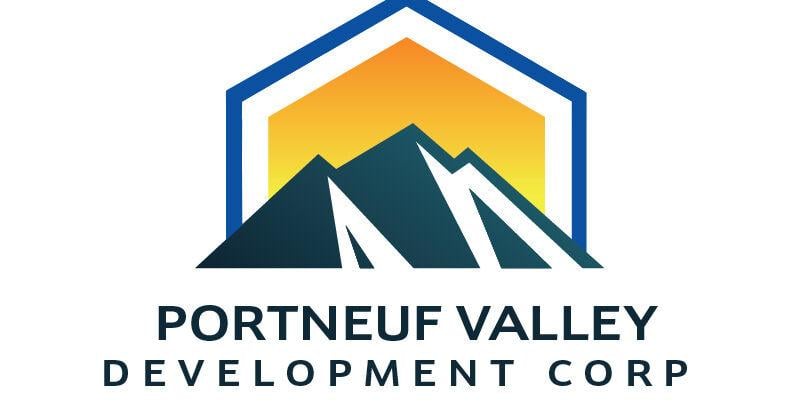Report on the Evolving Concept of National Security and its Implications for the Sustainable Development Goals
Executive Summary
The evolving concept of national security, expanding beyond traditional defense to include economic stability, public health, and technological leadership, has profound implications for the United Nations Sustainable Development Goals (SDGs). This report analyzes how shifts in Foreign Direct Investment (FDI) screening regimes, driven by these new security paradigms, intersect with key global objectives. Specifically, it examines the impact on SDG 3 (Good Health and Well-being), SDG 8 (Decent Work and Economic Growth), SDG 9 (Industry, Innovation and Infrastructure), SDG 16 (Peace, Justice and Strong Institutions), and SDG 17 (Partnerships for the Goals). The increasing use of protectionist measures and strategic competition over critical technologies risk undermining the international cooperation necessary for sustainable development.
Evolving National Security Frameworks and their Impact on Sustainable Development
Redefining National Security in Response to Global Crises
The traditional scope of national security, focused on military capabilities, has broadened significantly. Global emergencies have demonstrated the vulnerability of nations to non-military threats, prompting a re-evaluation of security priorities in alignment with several SDGs.
- Public Health as a Security Imperative (SDG 3): The COVID-19 pandemic highlighted the critical link between public health and national security. In response to supply chain disruptions for medical equipment, nations expanded FDI screening to protect domestic healthcare sectors. This aligns with SDG 3 (Good Health and Well-being) by safeguarding essential health infrastructure, but also raises concerns about protectionism hindering global access to medical supplies.
- Digital Infrastructure and Data Integrity (SDG 9 & SDG 16): The increasing reliance on digital systems has made cybersecurity a core national security concern. Attacks on critical infrastructure, such as the Colonial Pipeline, underscore the importance of resilient infrastructure as targeted by SDG 9. Furthermore, the protection of sensitive personal data is now a key focus of FDI regimes, reflecting the principles of SDG 16 (Peace, Justice and Strong Institutions), which aims to protect individuals and ensure institutional integrity.
The Economic Dimension of National Security and its Implications for SDG 8 and SDG 9
Economic security is now inextricably linked to national security, influencing FDI policies and impacting goals for sustainable economic growth and innovation.
- FDI Screening and Economic Growth (SDG 8): Nations are increasingly using FDI reviews to assess the economic impact of investments, not just security threats. Canada’s “net benefit” test, for example, evaluates an investment’s contribution to economic activity and employment, directly engaging with the objectives of SDG 8 (Decent Work and Economic Growth). However, protectionist policies, such as the blocking of the U.S. Steel acquisition on economic grounds, can deter cross-border investment, potentially slowing progress toward this goal.
- Protecting Strategic Industries (SDG 9): The protection of strategic sectors is a growing trend. The EU’s screening regulations for media, critical raw materials, and transport infrastructure aim to bolster industrial resilience, a key component of SDG 9 (Industry, Innovation and Infrastructure). While these measures can foster domestic industrial capacity, they may also limit the technology and capital transfer needed to advance innovation on a global scale.
Technological Superiority as a National Security Imperative and its Effect on Global Goals
The competition for leadership in emerging technologies has become a central pillar of modern national security strategy, creating complex challenges for global cooperation and equitable development.
The Race for Critical and Emerging Technologies
Governments are expanding the list of protected technologies beyond dual-use items to include a wide range of civilian applications crucial for future economic and military advantage. This directly impacts SDG 9 (Industry, Innovation and Infrastructure).
Key Technology Areas:
- Artificial Intelligence
- Semiconductors and Microelectronics
- Quantum Computing
- Biotechnologies
- Clean Energy Generation and Storage
This focus on technological sovereignty can stimulate domestic innovation. However, it also risks creating a fragmented global technology landscape, potentially hindering progress on shared challenges like climate change (SDG 13) and widening the digital divide, which runs counter to SDG 10 (Reduced Inequalities).
Outbound Investment Controls and the Challenge to SDG 17 (Partnerships for the Goals)
A significant new development is the regulation of outbound investments, designed to prevent capital and expertise from aiding the technological advancement of strategic rivals. This trend directly challenges the spirit of SDG 17 (Partnerships for the Goals), which relies on open financial flows and knowledge sharing.
Regulatory Actions:
- The United States’ Executive Order restricting investments in China’s semiconductor, quantum computing, and AI sectors.
- The European Commission’s recommendation for member states to review outbound investments in similar high-tech fields.
- Taiwan’s expansion of its outbound investment framework to cover a wider range of industries and jurisdictions.
These measures, aimed at maintaining a technological edge, can disrupt global value chains and limit collaborative research and development, thereby impeding the collective action required to achieve the SDGs.
Conclusion: Balancing National Interests with Global Sustainable Development
The concept of national security has evolved to encompass economic, health, and technological dimensions, leading to more stringent and expansive FDI screening regimes globally. This shift presents a fundamental tension with the collaborative framework of the Sustainable Development Goals.
While actions to secure critical infrastructure, protect public health, and foster domestic innovation can align with specific targets under SDG 3 and SDG 9, the associated rise in protectionism and strategic competition poses a significant threat to SDG 17 (Partnerships for the Goals).
Achieving a sustainable future requires a delicate balance. Policymakers must navigate legitimate national security concerns without dismantling the global cooperation that is essential for addressing shared challenges like climate change, economic inequality, and public health crises. The continued expansion of national security definitions without regard for their impact on global partnerships may ultimately prove counterproductive to long-term stability and prosperity for all nations.
1. Which SDGs are addressed or connected to the issues highlighted in the article?
-
SDG 3: Good Health and Well-being
The article directly connects to SDG 3 by discussing how the covid-19 pandemic reshaped the concept of national security. It highlights that regulators expanded the definition of strategic sectors to include “healthcare, pharmaceuticals, biotechnology and PPE” in response to widespread shortages. This demonstrates a focus on protecting public health infrastructure and ensuring access to critical medical supplies, which is central to achieving good health and well-being.
-
SDG 8: Decent Work and Economic Growth
The article’s core theme of regulating Foreign Direct Investment (FDI) is intrinsically linked to economic growth. It explores the tension between encouraging investment for economic benefit and protecting national interests. Policies like the “America First Trade Policy” and Canada’s “net benefit review,” which assesses an investment’s effect on “the level and type of economic activity in Canada, such as employment,” directly address the goal of sustainable economic growth and productivity.
-
SDG 9: Industry, Innovation, and Infrastructure
This is a central SDG in the article. It is addressed through multiple lenses:
- Infrastructure: The vulnerability of critical infrastructure is highlighted by the “ransomware attack on the Colonial Pipeline” and the SolarWinds hack, emphasizing the need for resilient infrastructure.
- Industry: The debate over the acquisition of “US Steel Corporation” and the protection of domestic industrial bases like the steel industry relate to sustainable industrialization.
- Innovation: The article extensively discusses the growing importance of protecting “civilian and commercial advanced technologies” such as “artificial intelligence (AI), semiconductor manufacturing, advanced computing and biotechnologies,” which are key drivers of innovation.
-
SDG 16: Peace, Justice, and Strong Institutions
The article details the “rapid proliferation of new and expanded regimes across the world” for screening FDI. These legal frameworks and governmental bodies (like CFIUS in the US, FIRB in Australia, and authorities in the EU) represent the development of effective and accountable institutions designed to uphold public order and national security in response to geopolitical tensions and conflicts, such as the “Ukraine-Russia conflict.”
-
SDG 17: Partnerships for the Goals
The article explores the dynamics of global partnerships through the lens of international investment. It discusses both the encouragement of FDI from “allies and partners” (e.g., the US ‘Known Investor’ portal) and the restriction of investment from “foreign adversaries” (e.g., US outbound investment rules targeting China). This reflects the complex policy-making required to manage global financial flows and partnerships in a way that aligns with national goals.
2. What specific targets under those SDGs can be identified based on the article’s content?
-
SDG 3: Good Health and Well-being
- Target 3.d: Strengthen the capacity of all countries, in particular developing countries, for early warning, risk reduction and management of national and global health risks.
The article illustrates this target through the actions taken during the covid-19 pandemic. Countries expanded FDI screening to “protect domestic health infrastructure and critical suppliers” of PPE and healthcare equipment, which is a direct measure to strengthen national capacity to manage a global health crisis.
- Target 3.d: Strengthen the capacity of all countries, in particular developing countries, for early warning, risk reduction and management of national and global health risks.
-
SDG 8: Decent Work and Economic Growth
- Target 8.2: Achieve higher levels of economic productivity through diversification, technological upgrading and innovation, including through a focus on high-value added and labour-intensive sectors.
The article discusses government policies aimed at enhancing industrial and technological advantages, such as “America’s AI Action Plan,” which “encourages the development of AI infrastructure, next-generation manufacturing via deregulation, investments and scaling manufacturing technologies.” This aligns with the goal of achieving higher economic productivity through technological upgrading.
- Target 8.2: Achieve higher levels of economic productivity through diversification, technological upgrading and innovation, including through a focus on high-value added and labour-intensive sectors.
-
SDG 9: Industry, Innovation, and Infrastructure
- Target 9.1: Develop quality, reliable, sustainable and resilient infrastructure, including regional and transborder infrastructure, to support economic development and human well-being, with a focus on affordable and equitable access for all.
The discussion of the Colonial Pipeline shutdown and the SolarWinds hack demonstrates the critical need for resilient energy and IT infrastructure. The article notes that “most mature FDI screening regulators around the world have identified cybersecurity and similar IT functions as a key activity to monitor and regulate” to protect “key infrastructure assets.”
- Target 9.5: Enhance scientific research, upgrade the technological capabilities of industrial sectors in all countries… encouraging innovation.
This target is directly addressed by the article’s focus on protecting and promoting “critical and emerging technologies.” The lists of protected sectors in the US (including AI, quantum computing, semiconductors) and the UK (including advanced robotics, data infrastructure) show a clear government focus on upgrading technological capabilities as a matter of national security.
- Target 9.1: Develop quality, reliable, sustainable and resilient infrastructure, including regional and transborder infrastructure, to support economic development and human well-being, with a focus on affordable and equitable access for all.
-
SDG 16: Peace, Justice, and Strong Institutions
- Target 16.6: Develop effective, accountable and transparent institutions at all levels.
The article describes the establishment and expansion of FDI screening regimes worldwide. These bodies, such as CFIUS in the US, are institutions created to “screen, prohibit, or permissively approve transactions that affect domestic interests, national security and public order.” The evolution of their mandates and procedures, as detailed in the article, reflects the ongoing development of these institutions.
- Target 16.6: Develop effective, accountable and transparent institutions at all levels.
3. Are there any indicators mentioned or implied in the article that can be used to measure progress towards the identified targets?
-
Indicator for SDG 3, Target 3.d
- Implied Indicator: National capacity and resilience of supply chains for critical health goods.
The article does not provide a specific metric but implies this indicator through its description of the problem. The fact that regulators “quickly reacted to widespread shortages of PPE and healthcare equipment” suggests that measuring the stability and domestic availability of these goods is a key performance indicator for managing health risks.
- Implied Indicator: National capacity and resilience of supply chains for critical health goods.
-
Indicator for SDG 9, Target 9.1
- Implied Indicator: Number and severity of cybersecurity incidents affecting critical national infrastructure.
The article uses the “ransomware attack on the Colonial Pipeline” and the “SolarWinds” compromise as case studies. These events serve as de facto indicators of infrastructure vulnerability. A reduction in such incidents would signify progress towards more resilient infrastructure.
- Implied Indicator: Number and severity of cybersecurity incidents affecting critical national infrastructure.
-
Indicator for SDG 9, Target 9.5
- Mentioned Indicator: Government-defined lists of critical and emerging technologies subject to regulation.
The article explicitly mentions the “White House Office of Science and Technology’s 2024 list of Critical and Emerging Technologies” and the UK’s “17 specified sectors” under the NSIA. The existence and scope of these lists serve as a direct indicator of government efforts to identify and upgrade technological capabilities.
- Mentioned Indicator: Government-defined lists of critical and emerging technologies subject to regulation.
-
Indicator for SDG 16, Target 16.6
- Mentioned Indicator: Volume of transactions reviewed by FDI screening institutions.
The article provides a direct example of this indicator, stating that the French FDI authority saw a “notable increase in the number of applications it received in 2024” and “imposed conditions for over half of all transactions it determined to be within scope.” This data point measures the activity and effectiveness of the institution.
- Mentioned Indicator: Volume of transactions reviewed by FDI screening institutions.
4. Table of SDGs, Targets, and Indicators
| SDGs | Targets | Indicators |
|---|---|---|
| SDG 3: Good Health and Well-being | Target 3.d: Strengthen capacity for early warning, risk reduction and management of national and global health risks. | Implied: National capacity and resilience of supply chains for critical health goods (e.g., PPE, pharmaceuticals). |
| SDG 8: Decent Work and Economic Growth | Target 8.2: Achieve higher levels of economic productivity through diversification, technological upgrading and innovation. | Implied: Implementation of policies to promote investment in high-value sectors like AI and next-generation manufacturing. |
| SDG 9: Industry, Innovation, and Infrastructure | Target 9.1: Develop quality, reliable, sustainable and resilient infrastructure. | Implied: Number and severity of cybersecurity incidents affecting critical national infrastructure (e.g., energy, IT). |
| SDG 9: Industry, Innovation, and Infrastructure | Target 9.5: Enhance scientific research, upgrade the technological capabilities of industrial sectors. | Mentioned: Scope and content of government-defined lists of critical and emerging technologies subject to regulation. |
| SDG 16: Peace, Justice, and Strong Institutions | Target 16.6: Develop effective, accountable and transparent institutions at all levels. | Mentioned: Volume of transactions reviewed, approved, or blocked by national FDI screening institutions. |
| SDG 17: Partnerships for the Goals | Target 17.13: Enhance global macroeconomic stability, including through policy coordination and policy coherence. | Implied: Number and scope of national policies (e.g., FDI screening, outbound investment rules) designed to manage global financial flows for national economic security. |
Source: globalcompetitionreview.com







